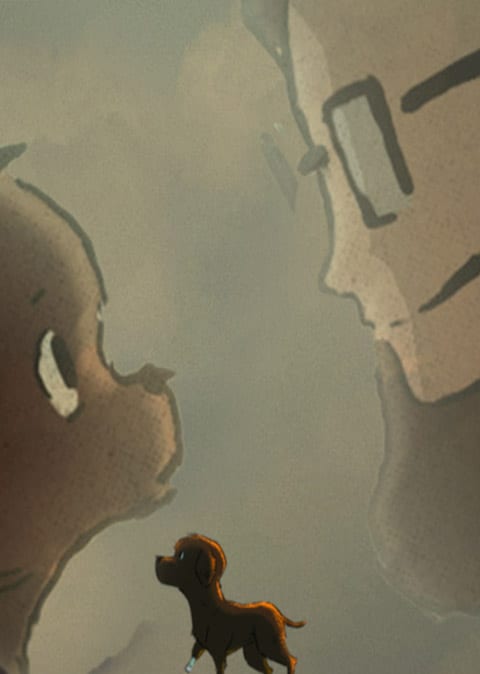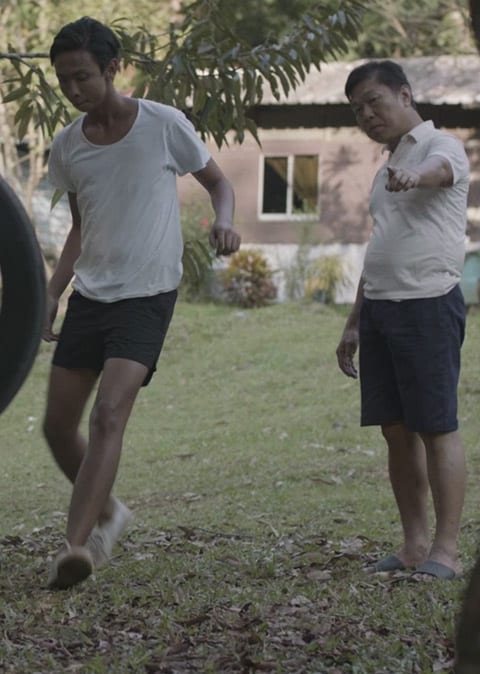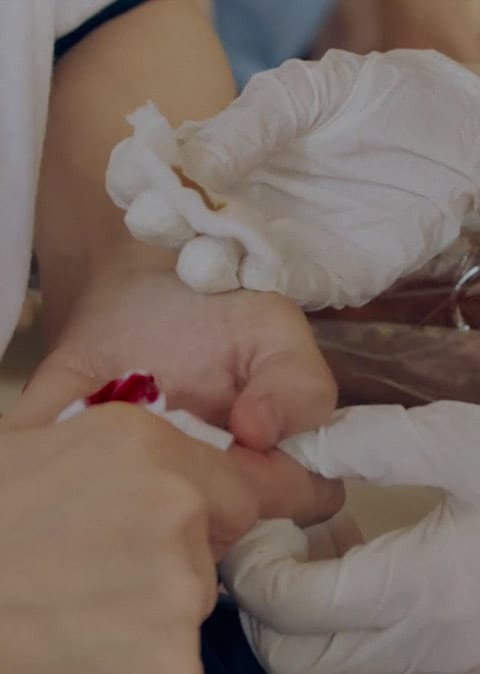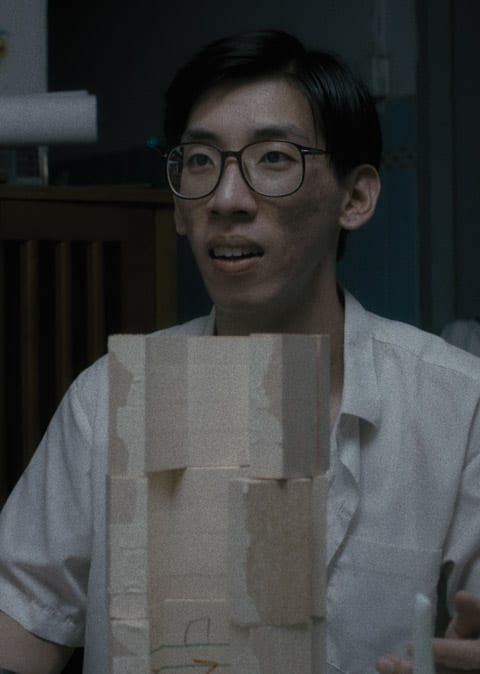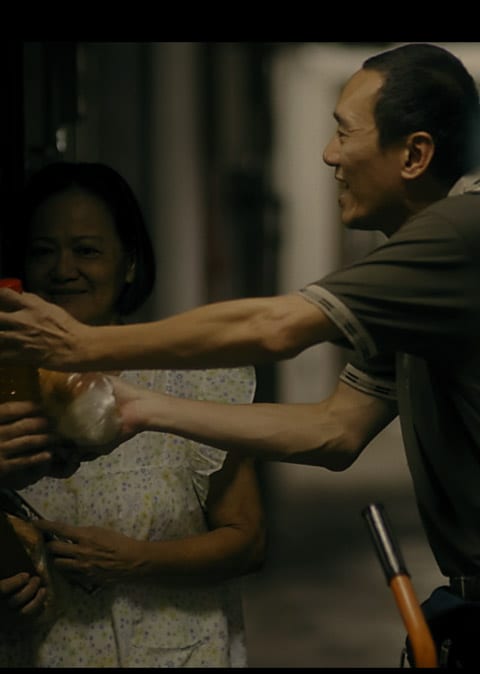Transcript
Grace Ann Chua 00:04 Are you familiar with the terms mental wellness, triggers, trauma and boundaries? What do they mean and how can you best care for members in your community? Welcome to Crafting Communities, a podcast that supports you in your journey to create a better experience for the people that you care about. I’m your host and pal, Grace. On today’s episode, I have with me Megan from Limitless. We’ll be tackling the very crucial topic of mental health and discuss how community leaders can care for the mental well-being of everyone in their community.
Grace Ann Chua 00:34 Hi Megan.
Megan Tang 00:35 Hi Grace.
Grace Ann Chua 00:36 Welcome to Crafting Communities.
Megan Tang 00:38 Very happy to be here today.
Grace Ann Chua 00:39 Hey! So, for today, we’re going to be talking about mental health for community leaders. But before we begin, could you introduce yourself and share with our listeners a bit more about you?
Megan Tang 00:47 Yes, sure. So, my name is Megan, and I’m from a non-profit organization called Limitless, and we work with youth in the area of mental health. So, our clients are typically aged 12 to 25. I’m a counsellor/caseworker. I’m also the leader of the outreach team.
Grace Ann Chua 01:05 Cool. It’s a lot of things.
Megan Tang 01:07 Yes, because our organization is still growing, we take on some hybrid roles. We typically provide pro bono and highly subsidised services for youths that come from families that cannot afford it, or also youths that are not really supported by their families to seek professional help in this area.
Grace Ann Chua 01:26 Yeah, there’s been a lot of conversation about the importance of mental health. But what is mental health?
Megan Tang 01:31 It’s not just the thinking or the feeling. That is not all that mental health is. There’s also the emotional aspect of it, there’s also the physical aspect and how it affects our functioning in our daily lives. Even the roles that we play, our social wellbeing, whether it’s at work, whether it’s in our communities, which I know is something that you guys are big about when it comes to communities.
Grace Ann Chua 01:54 Yeah. And is the term mental health even the right term? You hear terms like mental wellness, mental illness, mental disorder. So, is mental health the broad umbrella? What is mental health?
Megan Tang 02:04 I would say it’s like the overarching theme, I guess. And then you have mental wellness and mental illness under that. So, we kind of see it as a spectrum. On one end, you have mental wellness, and then on the other end, you also have mental health disorders. And the interesting thing, I guess, is that everyone falls along that spectrum. So, it’s a very inclusive spectrum. And the motion of it is that you can always go back and forth. Mental health disorders are not prejudice. Anyone can be susceptible to it and anyone can also find recovery once you’ve been in that space.
Grace Ann Chua 02:42 You’re not your mental health disorder. With an illness, you fall sick, you have a cough, you can recover from it, and then no longer have a cough.
Megan Tang 02:49 Yeah. And I guess if you want to view it in the same way as physical health, you invest into your physical health, right? You exercise, you eat right, you sleep well. It’s the same thing, where we also want to make sure that our mental wellness is intact. And we don’t want to get complacent with it into a point where we forget that we can also lean into the spectrum towards the disorder side. So, the middle of that will be the at-risk portion.
Grace Ann Chua 03:14 What are ways that you can improve your mental health?
Megan Tang 03:16 I think it really is about building that self-awareness, so there’s the internal part, where you are in touch with how you are doing and checking in with yourself, and making sure there’s balance in life, checking in on your functionality. I think that’s one key indicator of how well you’re doing. Validating your emotions, of course, and acknowledging how you feel, rather than not making that time and space for yourself. But there’s also the aspect of community and having a strong social support system that is there for you. So, I think there’s so many factors that can affect your mental health, whether it’s your self-concept, whether it’s your expectations of self, whether it’s just other external factors, like your jobs, or maybe that irritating person in the office that you don’t like but you see every day. There’s all these different things that you go through.
Grace Ann Chua 04:04 And what’s the relationship like between, earlier you mentioned about, physical health and social health and mental health? How do they all shape one another?
Megan Tang 04:12 If you’re just to imagine physical health, if you don’t sleep well, you’re not going to be very alert in the day. You may even become moody and then you can’t function well throughout the day, which affects the way you feel about yourself, which affects your perspective of the day itself. And if that continues, I think it really takes a toll on the individual. A lot of people who have mental health disorders tend to have issues with sleep and appetite. So, if you look at the list of symptoms that may indicate that you’re in distress, or that you may have a mental health condition, a lot of it actually intersects with physical symptoms.
Grace Ann Chua 04:46 Okay. I suppose if you’re having like a physical ailment or something, that would also affect your mental health. Like if you’re diagnosed with cancer or something, that would definitely result in different stressors and stuff like that, right?
Megan Tang 04:58 Yeah. And I’m guessing that’s why a lot of hospitals also see the importance in having a medical social worker, or having therapists on the team to attend to people who may be going through terminal illness. Or even if you think about athletes who have gone through severe injuries, things that are meaningful to them they can no longer do as much and that takes away from the fulfilment, satisfaction of life, which also plays on the mental health aspect.
Grace Ann Chua 05:23 Yeah. Earlier, you talked about this idea of mental wellness, at-risk and illness. How would you describe the different states? What distinguishes being in a place of mental wellness versus in a state of at-risk versus illness?
Megan Tang 05:36 There’s many ways to split up the spectrum, I guess. But I think this is the easiest way to understand it. Wellness is kind of when you’re thriving in life, and you feel like you’re doing well, you’re finding fulfilment in the things that you’re doing, you’re satisfied with the different areas of your life, your personal relationships, your work, career, even your own hopes and dreams. And yeah, you’re kind of in a good place. And then for at-risk, it could be you’re going through a stressful period, there is some stress injury, but you’re still handling it to some extent, you may be experiencing mood swings or loss of appetite, but it’s not prolonged. But when it comes to a disorder, we are talking about it being clinically diagnosed. Yeah, so there are some criteria that has to be met.
Grace Ann Chua 06:22 How does one distinguish between, okay, I’m going through like healthy stress versus this is too stressful?
Megan Tang 06:28 Yeah. Because I mean, if you go through life, you can’t just avoid all the stressors. They’re definitely going to find something. So, for healthy stress, we call it “eustress”. When you’re a kid and then you grow up, you kind of learn different things– how to walk, how to talk, how to take the bus by yourself to go to school, how to hang out with your friends in a public space, how to go for interviews, or how to do things by yourself basically.
Grace Ann Chua 06:50 But these are also new and scary experiences, right?
Megan Tang 06:53 Correct. Yes. So, I do see clients sometimes that were not able to go through certain developmental phases, because of maybe their circumstances, and they actually find it a lot more stressful to adapt at a later age. But the normal adaptations that you go through when you face different challenges during your developmental period can be considered eustress, right, like transitions into university, for example. It can be scary and stressful to some extent, but is very much necessary, and a lot of growth can come from that. Whereas for distress, it really takes a toll, like I mentioned just now, one thing you look at is the functioning and also for prolonged periods of time. So, if it is becoming too much for the threshold of that person, then it’s probably a distress.
Grace Ann Chua 07:38 Okay. Yeah. And this threshold of a person is subjective, right?
Megan Tang 07:43 It is very subjective and it also depends sometimes based on personalities. You have people who are naturally more anxious, you have people who, for some reason are always very calm and collected and I’m so jealous of those people. But it really depends on how you build that tolerance as well. And it’s something that can be moulded, it’s something that can grow, can increase.
Grace Ann Chua 08:05 Okay. If I understand you correctly, there are some personalities that are more prone to anxiety, depression?
Megan Tang 08:13 I would say, yeah, maybe genetically also. Sometimes you have people who are more prone to certain mental health disorders, especially if it runs in the family.
Grace Ann Chua 08:21 Okay. But then there are also strategies that you can employ to develop resilience or improve your stress tolerance?
Megan Tang 08:26 That’s right. So, if you think about people who have gone through multiple traumas in life, they may be more sensitive to certain triggers, and other people who have not gone through those traumas will not respond in the same way. But that window of tolerance can be increased over time, whether it’s through support, whether it’s through talk therapy, or other forms of therapy and interventions.
Grace Ann Chua 08:47 Okay. You mentioned an interesting thing– triggers. What is a trigger?
Megan Tang 08:51 Okay, I know it’s a very commonly used word online. Every time I scroll through Instagram, I see the word trigger, trigger, trigger, trigger warnings. How I’m using the word is based on the triggering of a person’s trauma response. So, maybe revisiting a place where the trauma event happened and then they get flashbacks, and then they go home, they get nightmares, seeing people who look like their perpetrator, for example. That’s what I mean by triggers.
Grace Ann Chua 09:19 Okay. And another technical term. What is trauma?
Megan Tang 09:23 How we define trauma is an event that is experienced by an individual. So, it can be one event, or it can be multiple events. And it’s about how that person is trying to adapt to the event that has happened to them. I always emphasise that it’s about the experience of the individual.
Grace Ann Chua 09:41 Yeah. And I mean, everyone has various traumas over the course of their life.
Megan Tang 09:46 Correct.
Grace Ann Chua 09:57 And coming back to the importance of mental health, what’s the relationship between these traumas and a person’s mental health?
Megan Tang 09:52 I think definitely, it takes a toll on someone’s mental health. There are so many different types of traumas. And when I say it’s about the experience of the individual, just imagine like a kid that lost their toy. They may not understand that, oh, you can just buy another toy, I can replace it, or in five years’ time, this probably won’t even matter anymore. But for us, we have that cognition to be able to process what is happening as adults. So, it really depends on the person going through. There are different factors that increase the severity of the trauma.
Grace Ann Chua 10:24 Okay. Can you recover from triggers?
Megan Tang 10:26 Yeah. I believe that you can, even though that is actually quite a clinical question. It really depends on, especially when it comes to therapy, the different types of modalities that are being used, and how one can possibly desensitize or reprocess those triggers and have a healthier association, and be able to move on from those traumas. So, if I were to give you an example, imagine a person that has gotten into a car accident with a white vehicle. They managed to recover, they were not severely injured, but it was a very shocking and life-threatening experience for them. Then in the future, whenever they see white vehicles, even though they may not be crossing the road, they start to get heart palpitations, they start to have cold sweat, feeling a lot of nervousness, feeling faint, that is a response to the trauma that has happened, even though they’re actually safe now.
Grace Ann Chua 11:19 If triggers are so personal to an individual, depending on each individual’s history and different life experiences, how do you not accidentally trigger a friend?
Megan Tang 11:30 That’s a good question. Do you want the bad news or the good news? The bad news is that it’s going to be hard to be certain about never ever triggering someone. The good news is that we can learn. And it’s also I guess, some responsibility of the individual to find healing and recovery for themselves. We cannot be responsible to help someone recover from their trauma, there has to be work on their part. For us, it’s on our part to know that we cannot assume what someone’s trigger is and what kind of help they need. So, I feel the best way to go about it is to have that open communication with them, to ask them if they’re comfortable with sharing what are some things that may trigger them off, and also to be able to communicate with them, if you’ve accidentally triggered them, and to make the intentions clear, and also take it as a learning experience.
Grace Ann Chua 12:21 How do you spot when someone is going through something?
Megan Tang 12:25 I think there are signs of distress that are a bit clearer that we can see. One is, of course, energy levels. If the person, for example, is usually a very hyped person, very extroverted, quite loud, and then they suddenly change and then they become very withdrawn or reserved, one thing that we look at a lot is changes. What is the person usually like and what are they like now? If we are seeing changes in their appetite, changes in their sleep patterns, if they seem to be very glazed over, a bit more incoherent, if they start to not be as sociable as before, being in isolation, no longer having interest in activities that they used to enjoy doing. Yeah, those are some tell-tale signs.
Grace Ann Chua 13:12 So, it’s really about awareness and knowing your friends, knowing the people around you, so that you can notice the changes and then be able then to reach out to support them.
Megan Tang 13:21 Yeah.
Grace Ann Chua 13:23 Coming back to the whole idea of the importance of community and mental health, what is the relationship between community and mental health?
Megan Tang 13:30 Yeah, I think earlier I mentioned about how having a strong social support can make a huge difference for someone’s mental health, especially if they’re on one end of the spectrum, and going through something really difficult. Just now, when you’re talking about how do you spot signs of distress in the individual, sometimes I feel that it’s not necessary to wait to spot signs of distress in someone, but it’s good to just check in anyway. So, I think that accountability…
Grace Ann Chua 13:55 Like being proactive right?
Megan Tang 13:57 Yeah being proactive about it. I mean, you yourself, you’re a leader in more ways than one, so I’m sure that you have that relationship as well, with the people around you.
Grace Ann Chua 14:05 Yeah. Actually on that note, I think something that I do that is helpful is creating that space for intentional check-ins. Because not all the time are people or your team or your community willing to come forward to share something because it’s not the right opportunity or the right time. So, I think creating that space to have check-ins, like monthly check-ins, weekly check-ins, one on one check-ins or like as a team for people to be able to voice out their concerns and to know that this is the space where the two of you to be able to talk about what you’re going through.
Megan Tang 14:35 I think you’ve answered your own question perfectly. Yeah, I think it’s just having that support and knowing that people care, that you have an outlet, that you’re not going through things alone. It can make like a world of difference.
Grace Ann Chua 14:48 Yeah. Earlier you mentioned about having a social support network, right? What does a healthy social support network look like? Because I guess some people have one or two close friends or some people have a lot of acquaintances. Is there an ideal in regards to having good mental health?
Megan Tang 15:04 Yeah, I don’t want to be too critical, because I know some people prefer having fewer friends and it’s not really about quantity. I think it’s really about the quality of the relationships that you have. And I do encourage people to not just rely on one or two points of contact. But that is only because in our relationship, it has to be give and take. So, I think if you just rely on one person, it can also take a toll on the other individual, and we want to be able to support one another. It’s not just about you, it’s not just about the other person.
Grace Ann Chua 15:35 On that note, it’s also healthy to have a variety of close friends that you can turn to for support. If you only have one outlet to express yourself to or to share all your burdens with, then that may be a lot on the other person that is providing you with the care and support. And I mean, if you only have one person that you can go to, what if that person’s also going through something and doesn’t have the capacity to support you, too, right?
Megan Tang 15:56 Yeah. I think you brought up a good point, which is the boundaries. Being able to draw boundaries early on in the friendship in these relationships should be something that is respected. And I think if you have someone constantly pushing your boundaries, it’s also going to get very draining. So, I do encourage individuals to weigh out their relationships and see if they have enough nourishing friendships.
Grace Ann Chua 16:18 Okay, so two technical terms. What are boundaries? I’m assuming boundaries is very subjective. And then what is nourishing?
Megan Tang 16:27 I think boundaries, you can break it into different categories. Like physical boundaries— obviously not touching someone if they’re not comfortable with touch. Those kinds of things are a bit more obvious. There are also emotional boundaries— not imposing your feelings on somebody else. And of course, intellectual boundaries— if someone has different views, you don’t make them feel judged for the way they think or their decisions. So, there are many different ways that we can exercise boundaries.
Grace Ann Chua 16:55 Okay. Do you have an example of what kind of boundaries would you set with a friend or a community member or a leader or someone that you are either seeking support from or providing support to?
Megan Tang 17:06 I actually always find that personal boundaries, like personal relationships, are the hardest to draw boundaries on just because there’s not as much of a clear-cut line, as when I’m working with a client. I can tell a client that my off hours are after 7:00 or 8:00 p.m., or I can get back to you the next morning, but with friends, how do you do that right? So, I think honesty is the key and I’ll let them know that as much as I want to be there for you right now, I feel I don’t have the capacity or the bandwidth. And because I know that you deserve someone who can listen to you, I don’t think I’m the right person. But when the time comes, and when I’m ready to be there, I will let you know.
Grace Ann Chua 17:46 What about acquaintances, or the value of weak ties, versus the role of having a wider social network, in terms of helping you to improve your mental wellness?
Megan Tang 17:55 I think that’s why public awareness education is so important, because people will understand the importance of mental health and how this can be a non-taboo subject, and it will be normalised for you to go up to someone and say, “Hey you know, I’m actually not doing so well. I myself may not have a support circle, but I’m wondering if maybe you can point me in the direction of professional help,” or “What would you do in this circumstance?” Just having someone to listen to you, even if you’re not close to the person.
Grace Ann Chua 18:26 Yeah. A thought that came to my mind is that sometimes people are more comfortable sharing personal things to strangers or someone new that you meet, because maybe you’ve already been telling the same situation over and over to your close friends, sometimes just to share it with someone new, brings out a different dynamic. And also, the value of having new friends, or new acquaintances in your life are that they also bring new perspectives into your situation that you may not have considered before. So, that also helps with boosting well-being.
Megan Tang 18:53 Definitely, I guess that’s why also clients come in saying they’ve not spoken to anyone else about their circumstances, maybe because they think people are going to have expectations of them, or a certain image of them and they don’t want their relationship to change. So yeah, I think there’s value in both close relationships and also, like you mentioned, more distant relationships.
Grace Ann Chua 19:16 Coming back to the topic of community and leadership, how, as a leader, can you better care for the mental health of others in your community?
Megan Tang 19:24 I really like your answer about creating a safe space for people to check in and be intentional about it. I think it’s the same way when it comes to checking in on your community members. We want to care for our community members first before pushing them to do more work or to do more of their duties. Actually, I have a story about this, which is a bit embarrassing for me, but I had an intern once who was working very hard beyond their office hours and I asked them, “Why are you working so hard? You just have this and this to do. You don’t have to do everything by today.” And the response was that, “but all of you are working so hard, so I feel like I need to match up to that.” I felt ashamed. And I felt that it is really about setting the example as well. We talked about caring for others, but we also need to care about ourselves as leaders, making sure that we have that balance, however that may look like for each individual. Because members are watching leaders.
Grace Ann Chua 20:29 Yeah. I love your story because it reminds me of a colleague. I remember this one time, I sent her a message, and it was after 7:00 p.m., and she replied like, “Hey Grace, thanks for asking this question. It’s after office hours, I’ll get back to you tomorrow.” It was just like a short message, but I was like, “Yeah! I mean, this isn’t really very urgent.” I’m just sending a message because I am working on my own flexible hours. And I didn’t really expect a response from her but I appreciated the way that she communicated her own boundaries. And that also helped me too, because I guess no one had really role modelled that for me too, so when I saw the message, I was like, “Yeah, sure, I can tell this to other people as well.” It’s just a simple sentence but it also got me thinking about how when I message people outside of office hours, to also explain that you don’t have to get back to me right now, this isn’t mega urgent, we can talk about it tomorrow, we can talk about it next week.
Megan Tang 21:13 Yeah, I think that’s a very good way to draw boundaries, right? We’re talking about boundaries. So, I think that maybe as leaders sometimes we can also help to form those boundaries for all members, especially when they may think there are certain expectations.
Grace Ann Chua 21:26 Yeah. Like clarifying or communicating those expectations.
Megan Tang 21:29 Yeah, exactly.
Grace Ann Chua 21:30 What about at Limitless? Are there any practices that your organization does to create better mental wellbeing for your team?
Megan Tang 22:37 We try to practice what we preach when it comes to mental health. So, we do check in on our staff quite regularly, we do once to twice a month check-in. We also have weekly meetings where people can bring up things that they’re struggling with at work or any clarifications that they may have because we don’t want them to feel like they’re handling things alone, right? You want them to feel supported. We also have Mental Health Days.
Grace Ann Chua 22:01 Okay. What’s a Mental Health Day?
Megan Tang 22:03 So, if you feel as though you need to recharge or maybe something has happened, which is not considered a medical issue, or it doesn’t fall under compassionate leave for example, you can opt to take a mental health day for yourself to recharge.
Grace Ann Chua 22:18 Okay. To recharge. It’s like an MC.
Megan Tang 22:19 Yes, somewhat for the mind. There’s another thing that I like that we do. We gather maybe twice a year to sit down with the whole team, and talk about strengths and successes and also our pain points and no one gets criticised for sharing their pain points.
Grace Ann Chua 22:36 Yeah, oftentimes, when we’re going through something, it’s very scary to say it out loud. but when another person shares vulnerably about their experiences, that also helps you know that you’re not alone. One of the quotes that I heard when I was much younger, which I really like, is how deep you’re sharing is, the person responding will then match it. I guess in this kind of situation, when someone opens up to share about the struggles that they’re facing with their clients as well, then that will also give another person the courage to respond and share another different struggle but of a similar level of vulnerability.
Megan Tang 23:11 Yeah, definitely.
Grace Ann Chua 23:12 Thanks Megan. Could you leave us with one closing thought for our listeners today?
Megan Tang 23:17 Yeah, I would say encourage people to reframe their understanding of mental health and to normalise have such conversations, like the one we just had.
Grace Ann Chua 23:27 That’s all the time we have for this episode, but there’s so much more to talk about on this topic. Next week we’ll be continuing our conversation on the topic of burnout. See you there.








